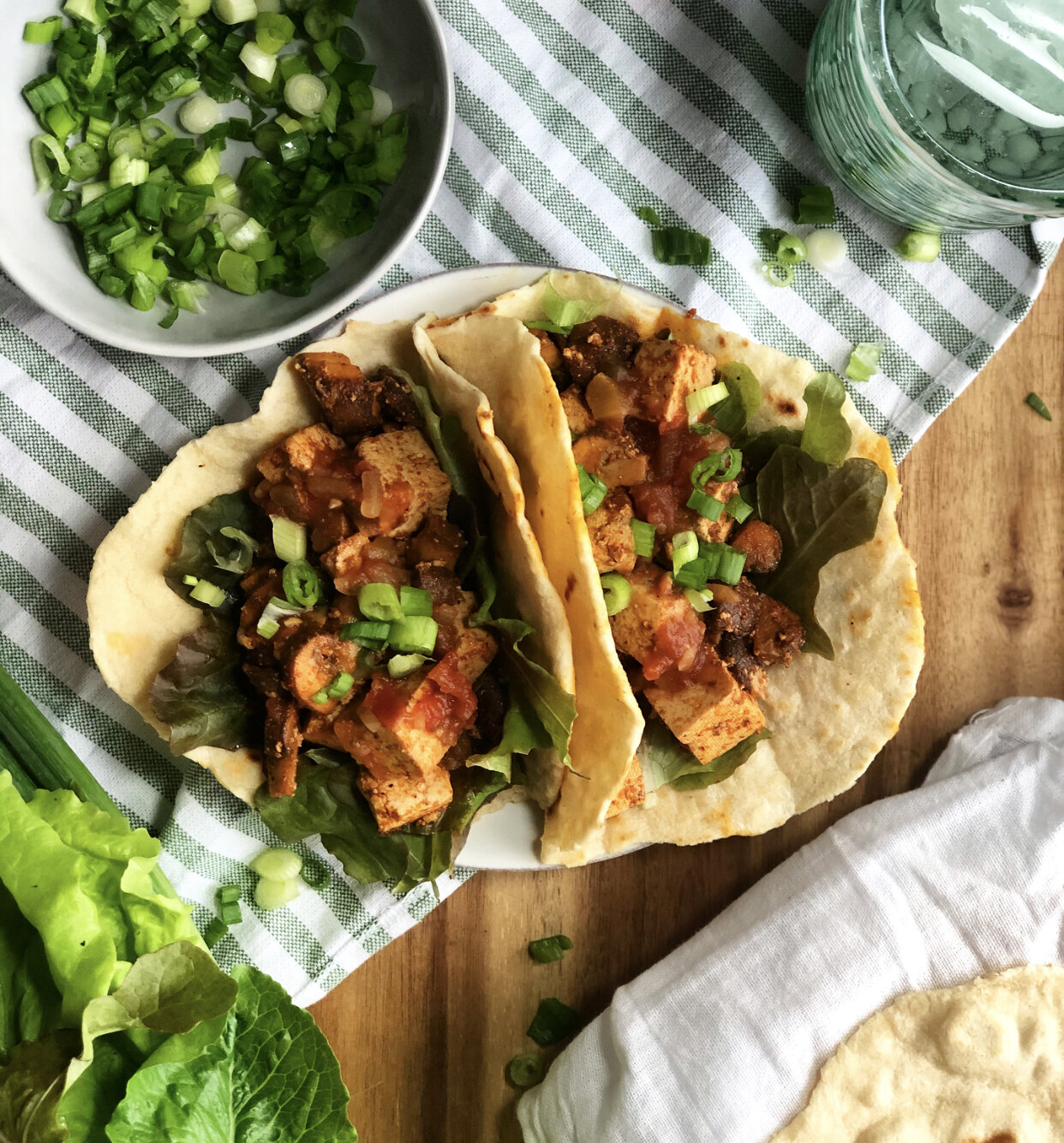Sustainability Profile: Tofu
One of my favorite tofu recipes: Mushroom and Tofu Tacos
If you're trying to eat more sustainably, you've probably noshed on your fair share of tofu. But how sustainable is tofu? In this post, I'll cover all the sustainability concerns surrounding your favorite vegan protein.
How is tofu made?
Tofu is one of many vegetarian protein sources made from soybeans (AKA soya beans, AKA Glycine max). To make tofu, soybeans are dried, soaked in water and crushed. Then, tofu makers separate the pulp from the liquids and add acids to coagulate the liquids into solids. These solids are then pressed together into the cute little blocks you see at the grocery store.
Although making tofu is more energy-intensive than, say, picking some string beans from your backyard, it is not as energy-intensive as packaging meat or other highly-processed foods. This means that you should be a little concerned about the greenhouse gases released during tofu processing, but don't sweat it too much — tofu processing is not a significant contributor to climate change.
The primary sustainability concerns surrounding tofu have more to do with soybeans than tofu itself, so let's take a closer look...
Bottom line: Tofu is made from processing soybeans. This process is not terribly energy-intensive or unsustainable.
Where do soybeans grow?
Soybeans are native to East Asia but are most commonly grown throughout the U.S., Brazil and Argentina. In the U.S., most soybean fields are monocultures, which perpetuate the typical ills of modern agriculture.
These monoculture soybean fields contribute to pesticide pollution, nutrient depletion, decreased biodiversity and more. (Pst! For more information about monocultures, read my Pros and Cons of Monoculture Farming article!) Soybean monocultures are slightly better than most because soybeans fix nitrogen, a common component of fertilizer, into soils. Nitrogen-fixing crops can decrease the need for fertilizer. However, most soybean fields still require other potentially damaging fertilizers, like phosphorous and potassium.
Soy production in the U.S. is not a pretty sight, but unfortunately, the situation is even worse in Brazil. Soybean fields have historically been one of the leading causes of deforestation in the Amazon rainforest and surrounding natural areas. As big ag companies buy these lands, they displace not only endangered plants and animals but also the small farmers and indigenous people living off that land. Clearly, this practice is not socially or environmentally sustainable.
Soy-related deforestation was especially bad in the early 2000s. By 2006, the world had enough — members of the soy industry, world governments and civil society signed the Soy Moratorium, which banned parties from buying soy grown on recently deforested Amazonian land. Although this agreement has decreased deforestation in the Amazon, other areas of Brazil (especially the Cerrado region) remain super susceptible to soy-related deforestation. The Soy Moratorium is a good sign of change, but not nearly enough to save the people, plants and animals of Brazil from soybean agriculture.
Bottom line: Soybeans contribute to pollution, biodiversity loss and nutrient depletion in the U.S., and major deforestation in Brazil.
Does tofu contribute to deforestation?
So soybeans definitely contribute to deforestation, but is tofu really to blame? Lucky for all the tofu-lovers out there, the answer is mostly no. The vast majority of soybeans are grown for livestock feed rather than human consumption. Another smaller portion of soybeans is used to make biodiesel. So, this leaves tofu and other soy-based food products low on the list of soybean uses. In other words, animal agriculture is much more at fault for excessive deforestation than tofu.
Bottom line: Most unsustainable soy is used for animal feed, not tofu.
How can I buy sustainable tofu?
Tofu doesn't contribute to deforestation or climate change as much as animal agriculture. However, this doesn't entirely let tofu eaters off the hook. When buying tofu, read labels carefully. Some tofu sold worldwide may be sourced from deforested lands in Brazil, so avoid buying Brazilian tofu if you live outside of South America. And if you live in South America, be sure to source tofu from a trusted local source. If you live elsewhere, look for organic tofu that was sourced as close to your home country as possible.

